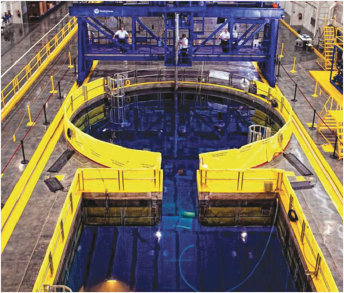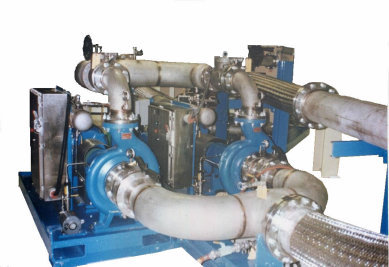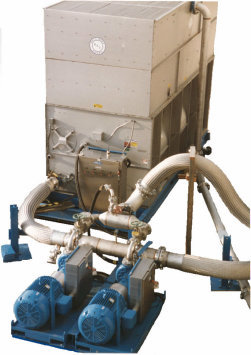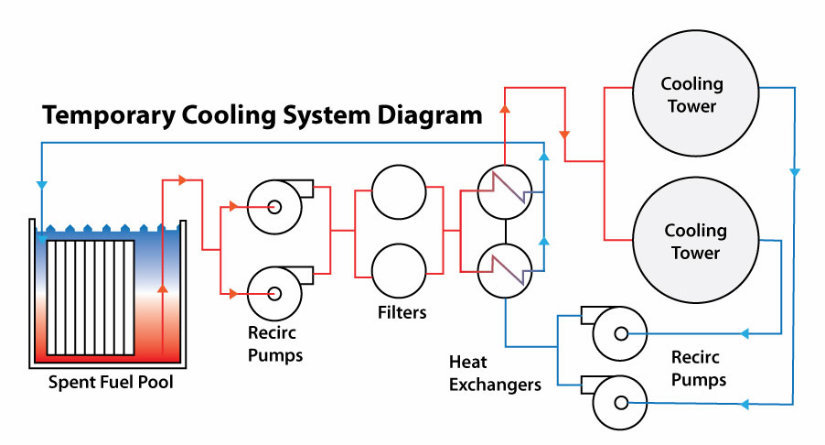
Spent fuel pool
Background
Westinghouse has developed a comprehensive program tailored to complement plant systems for decay heat removal during outages. The program has integrated engineering excellence with complete solutions to address specific issues.
Description
During refueling outages, especially when a full core offload is required, moving fuel to the spent fuel pools (SFPs) is often delayed due to the need for the shutdown cooling system to remove enough decay heat from the core. This allows the SFP cooling system to safely handle the residual heat of decay during its storage in the pool.
Since most plants have now streamlined their outage activities to the shortest possible duration, some plants are ready to move fuel from the reactor to the SFP before the decay heat has been removed. This “lost” time can result in more than $1 million per outage in replacement power costs alone.

Primary cooling pumps
To eliminate lost time and money, Westinghouse has developed a comprehensive program tailored to minimize reliance on plant systems for decay heat removal during outages. This unique system consists of portable equipment skids that are designed to be installed quickly and easily in convenient locations of the plant on a temporary basis. This modular design of pumps, filters and heat exchangers permits safe and reliable operation with redundant operation capability.
Benefits
The safety design and features allow for plant requirements, such as:
- Seismic requirements
- Environmental release limits
- Fuel pool temperature limits
- Water chemistry limits
- Operating system interface

Secondary cooling pumps and cooling tower
Human Performance and Safety
During plant outages, the temperature on the refuel floor can increase enough to make the working conditions very uncomfortable; sometimes the heat and humidity impede work performance and safety. The temporary cooling systems, designed and fabricated by Westinghouse, reduce the pool temperature and, consequently, the refuel floor temperature. This creates a safer and more productive environment during outage activities.
















